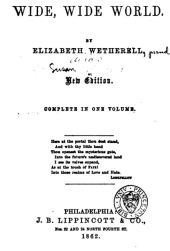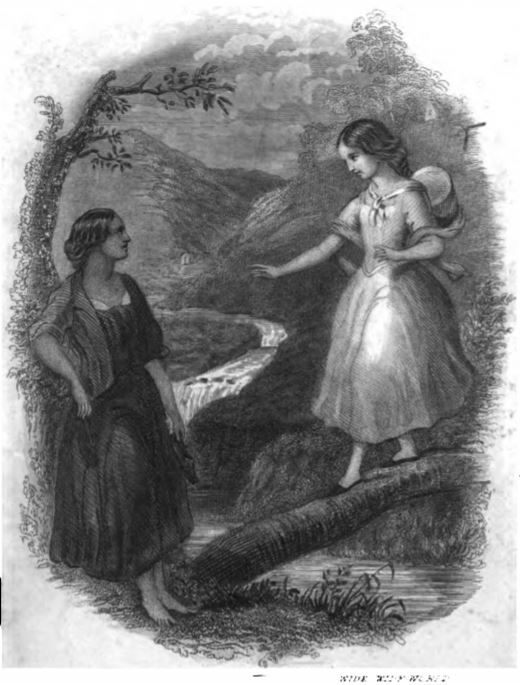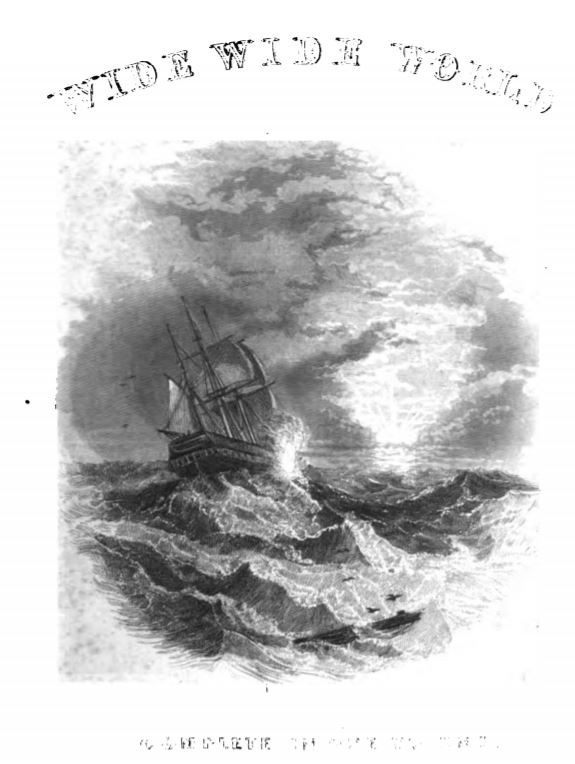“Good came out of evil, as it often does…” Thus writes Susan Warner at the end of her novel The Wide, Wide World, a work often considered America’s first best seller. It was certainly a literary sensation.
Published by Putnam in 1851 Warner’s novel was widely acclaimed. Henry James, for example, compared it to the work of Flaubert. In two years alone, fourteen editions were issued. It remained in print through 1892 and sold thousands of copies in both the United States and England.
The Wide, Wide World is the story of a little girl’s journey to womanhood. Ellen, a spoiled and highly emotional child, is transformed by a series of unfortunate circumstances and the guidance of autocratic men into a submissive, self-sacrificing woman—the ideal woman of the Victorian period.
and highly emotional child, is transformed by a series of unfortunate circumstances and the guidance of autocratic men into a submissive, self-sacrificing woman—the ideal woman of the Victorian period.
The story begins in New York City where Ellen is the child of privilege whose world is shattered when her father takes her mother away to die, and she is sent to live with an unfeeling aunt and forced to adapt to the hard life of a farm girl.
For today’s reader, the novel suffers from a surfeit of sentimentality and religion and from the leisurely literary style of the nineteenth century in which detailed minutia, such as how cream is separated from the milk in a Hudson River dairy, is given as much attention as the main action. Adding to the weightiness of the style is a bouncing point of view that carries us from one person’s head to another, and the author’s spelling out what we are supposed to feel in each scene.
That said, why would people fascinated by the Civil War want to wade through Ellen’s struggle to become subservient to the will of God and to male authority? For one thing, the book is emotionally powerful. I found myself crying at several points for poor Ellen. There is also an underlying sexual innuendo in the relationship between the “guiding” influence of older men over a naïve, young girl.
 Most importantly, the book is a cultural artifact of its time. Jane Tompkins in her afterward to the 1987 reprint by the Feminist Press calls Warner’s work the “Ur text of the nineteenth century. Remember this is what a huge proportion of people, particularly women, were reading before and during the Civil War. The story creates mental images, in the way only a novel can do, of the prevailing beliefs of a culture in which death was a constant companion and life circumstances often beyond one’s control. Warner, whose life in many ways mirrored that of Ellen’s, found no comfort in a life of poverty and spinsterhood, until she accepted the tenet of the novel: Life is often grim and what you cannot change you must bear up under day by day with the help of God.
Most importantly, the book is a cultural artifact of its time. Jane Tompkins in her afterward to the 1987 reprint by the Feminist Press calls Warner’s work the “Ur text of the nineteenth century. Remember this is what a huge proportion of people, particularly women, were reading before and during the Civil War. The story creates mental images, in the way only a novel can do, of the prevailing beliefs of a culture in which death was a constant companion and life circumstances often beyond one’s control. Warner, whose life in many ways mirrored that of Ellen’s, found no comfort in a life of poverty and spinsterhood, until she accepted the tenet of the novel: Life is often grim and what you cannot change you must bear up under day by day with the help of God.
It is also a story we can identify with. We have all felt powerless at some point in our lives, been injured emotionally, or treated unjustly whether on a small scale or in the larger context of community. And sometimes like Ellen and the majority of women of the period, we do not believe we have the option of rebelling or running away. Jane Tomkins warns that this is because the urge to be dutiful and submissive when confronted by authority, whether it be a Wall Street broker, a ranting politician, or a president sending your child to war, is our inheritance from the nineteenth century. And if you pictured all those type-casts as men, her point is made.

The Wide, Wide World is available as an e-book from Google Books.

Leave a comment